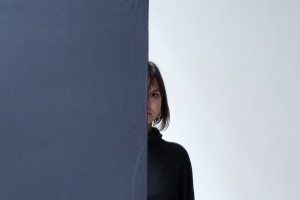August 12, 2017
By Cristina Bogdan
Mobile Biennial
Lately I’ve come to believe that art that works is the one which creates new frames for various entities to intervene in, with a noticeable degree of imagination, freedom and intelligence. These settings are as effective as they are not tributary to a single view, be it even contemporary, on art, and as the pressure they exert on said entities is minimal. Of course, I hear daily about new [art] spaces opening, about inter-, or even trans-disciplinary festivals, about the idiosyncratic positions of various actors on the art scene, which others try to replicate. One gets the feeling though that they never move beyond the “and they lived happily ever after” phase, in the sense that nothing is heard again about these initiatives after having been announced with hype. The truly complicated part is the everyday. How do you create a frame for resistance within the banality of daily life?
Perhaps to appease my curiosity regarding Club Electro Putere’s proposal to found the Mobile Biennale, I agreed to participate in this year’s edition. As early as 2012 I would hear rumours of the cool gang’s more or less artistic adventures, travelling throughout the country, in the first edition by train, and in 2015 by coach and only in Oltenia. I wasn’t living in Romania at the time, and of course the biennial functioned for me as this idyllic image of smart art which you can make when you’re not constrained by money, galleries, 9 to 5 jobs which leave you with 5 minutes of art-making per day, etc. Since I am back home it became much clearer to me what constraints Electro Putere operates under – the biennial, according to the two coordinators, Adrian Bojenoiu and Alexandru Niculescu, is a reaction both to “elevated” West-specific constraints and to local, chronic poverty.
What makes this reaction to the context a viable one is that the two didn’t stop at merely opposing it: they proposed instead a number of constructive elements. Their starting point was the fact that they had minimum funding guaranteed, enough for the 35+ guests to eat, sleep and travel for 7 days. Because that left no money for some actual production, this became the biennial’s catch: no participant would be pressed to create/produce anything. Over dinner at the comfy guest house Aristocratis, next to Piatra Neamț, Virginia Lupu, one of the artists invited, tells me: “It’s cool that they’re doing this; nobody ever does anything for us artists”. We could stop here – to be honest, the subversive potential of bringing almost 40 artists on a holiday paid from public funds is considerable.
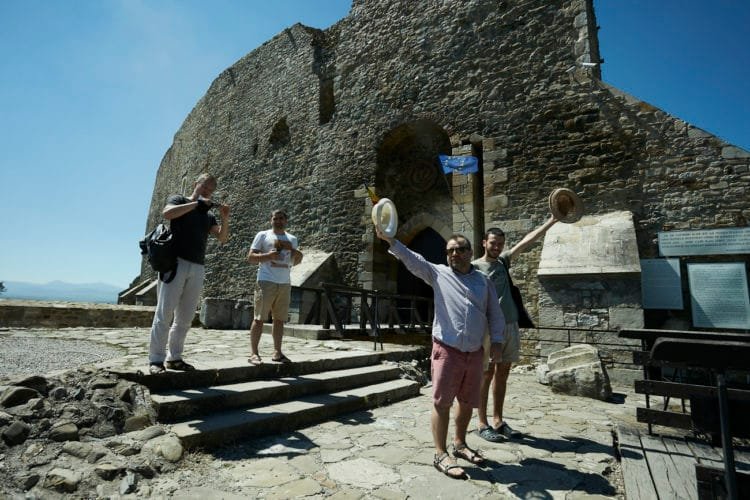
Luckily, things don’t stop here – like I said, Adrian and Alex did more than oppose formulas and constraints. They tried – and here we finally find out what happened to the prince and princess after the end of the fairytale – to act at that daily level, to facilitate moments of exchange and creation without immediately recuperating them as art. Things however get complicated, because no matter how casually you make these proposals, you must have a strategy prepared so that such moments occur “spontaneously”. In fact, you have to ensure on a more macro level what normally takes place on a personal level when creation happens – as is well known, 90% perspiration. As an organizer/artist, you must therefore work non-stop so that everything is relaxed, so that nobody concerns themselves with technical details (is the hotel room good enough, are there vegetarian options for lunch, are we stopping enough times to go to the toilet, etc.), but, most importantly so that the interactions among participants are as fluid and significant as possible. Some mistakes were flagrant: we didn’t start by introducing ourselves, the framework wasn’t explained very clearly, and whenever one of us proposed an introductory moment, when not visiting a monastery or a studio, they weren’t taken seriously, and couldn’t do their job. In other words, the organizers decided to relax, as if that could actually happen. The most visible result was a kind of group relaxation, which often translated to excessive boozing & eating and a lack of any intellectual activity. Besides the one-on-one discussions, the collective moments lacked any intellectual component. I imagine this is what happens in hippy communes and in attempts at alternative groups in general: the first thing that gets lost is ambition, the desire to flourish, which, despite being exploited under capitalism, stems from a natural human desire to self-improve. I think it was Brâncuși who said that the hardest thing is to put yourself in the appropriate posture to create.
Surprisingly, the most coherent moment of the whole biennial was the day spent on the Zidaru couple’s estate in Bucovina. 90% of us went in harboring prejudices and a sort of apprehension towards the two artists, who are representative of an anti-system Christian Orthodox fundamentalism, with huge success on the not just national art market. We found repellent the idea of associating ourselves with artists openly hostile to human rights, who, at the same time, preach faith and spirituality, especially in the current context where BOR [the Romanian Orthodox Church] symbolizes civic retardation. I should have known though, after having had as a guest at ODD a neo-protestant pastor who practically held a PR class in front of 30 contemporary critical-heavyweight artists, that the Zidaru couple wouldn’t say a single word out of place, that they would modestly, though not without pride, present their house and estate, that they would talk to us in art and entrepreneurship terminology about their work, and that the religious aspect would remain untouched upon. In the trees’ shade, after having eaten around 10 excellent vegetarian dishes and could barely move, we actually managed to organize our only collective debate, initiated by sociologist Diana Mărgărit, on the topic of the effectiveness of art in civil disobedience. In a way, the Zidaru couple had created a setting like the Mobile Biennale did: their house was open to artists “of a particular ethics” (we naturally fit the bill), and the process of creation was facilitated for those selected to join the community.
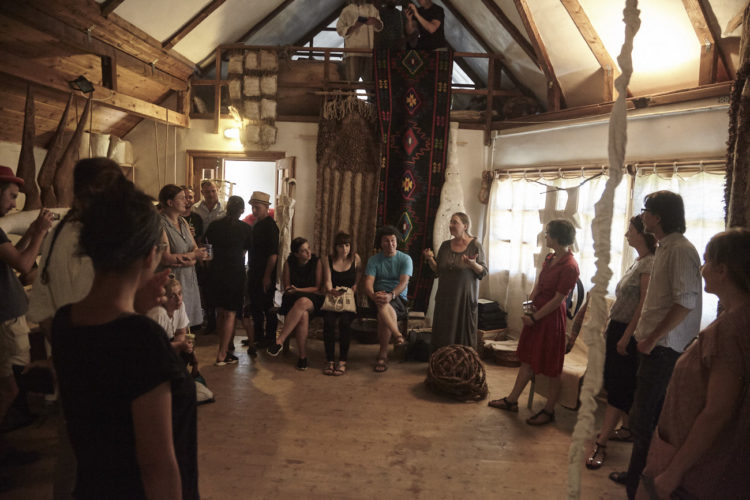
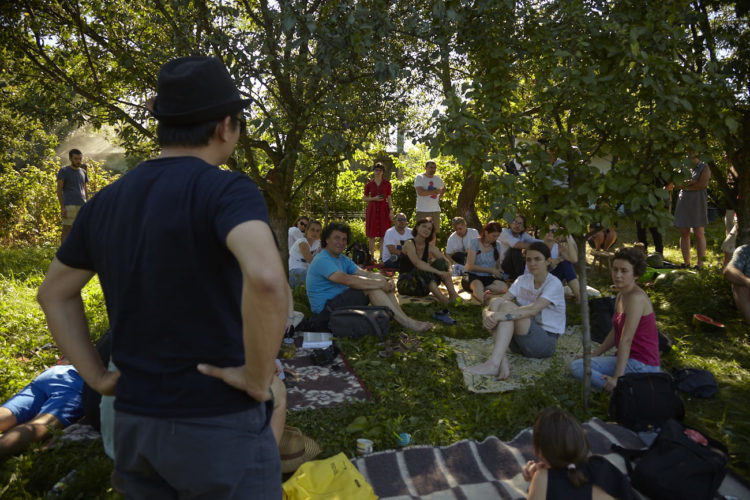
There were remarkable moments throughout the biennial, but none to leave an intellectual impression on me: for instance we had two nights of ping-pong playing like in high school, with hollering and sore muscles, after which we improvised a dance party with hits from the ‘90s, and the ladies at the guest house let us have a ball till dawn, though you could hear the music throughout the entire valley. Matei Bejenaru alone tried repeatedly to draw us into reflexive situations; he took us to a factory in Iași to see Romanian labor conditions, he welcomed us in his house, gave us Vector catalogues, and made us sit through presentations on contemporary classical music. And the one-on-one discussions with Matei were the most instructive, as he no longer wastes time with small talk and so you know you’re going to immediately broach a meaningful subject. It wouldn’t have hurt for the organizers to have more faith in his abilities as an organizer and to entrust him our souls, since someone was already taking care of our stomachs.
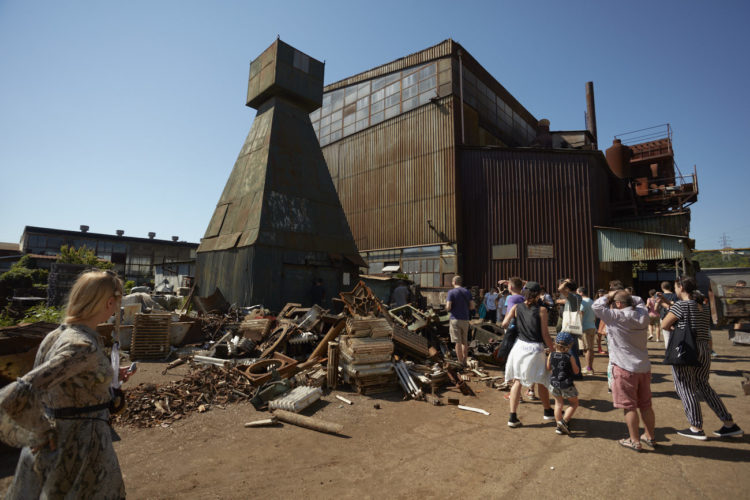
Worth a mention is also the exhibition, to which we ended up going on our own, by Andrei Nacu in the Nicolina neighbourhood in Iași. Andrei owns an impressive archive of family photos from the communist period, and exhibited some of them, grouped around three themes, in the corridors of three blocks of flats in this great bedroom-neighbourhood. Though you’d be tempted to believe that coming face to face on the staircase with around 20 photographs in which all kinds of people pose with a stuffed life-size bear is a form of easy nostalgia, the combination of scratched walls and black-and-white images in which you can almost recognize yourself is absolutely wonderful. The recurrence of certain motifs (the stuffed bear, the red ball with white polka dots, the Daffy Duck toy) goes against nostalgic reaction, but it doesn’t go for a didactically annoying deconstruction effect either. The impression is rather of a panorama of a somewhat distant lifestyle, with which you can relate horizontally, especially since the artist brought it to your doorstep.
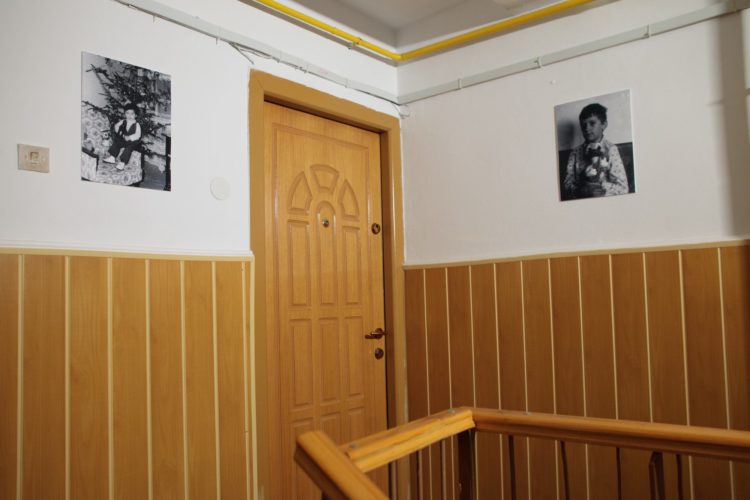

All in all, after 7 days of wandering through Moldova, it’s fair to say that the experience did me well, helped me relax, somewhat cheered me up, helped me get close to people that I didn’t know too well, and, on a more practical level, brought me for the first time to Chișinău, where I plan to return as soon as possible for a longer period of time. We can say that what the organizers had planned happened: nothing was created. The biennial came and went, and I felt that something had been done for us, but, if one can’t give anything back, one can end up feeling frustrated, conclude that they have been deprived of a fundamental right, that of responding to a gift. I think this setting must be rethought: freedom without imagination may not produce the results we expect.
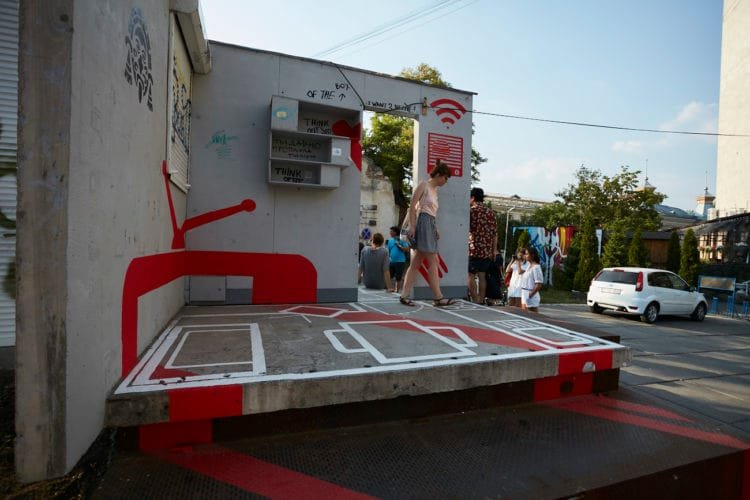
The Mobile Biennale, organized by Club Electro Putere Craiova, took place in Moldova between 30 July – 15 August 2017.
Andrei Nacu‘s exhibition in Nicolina, Iași, was part of the project Micro-Narratives organized by 1+1 and Tranzit Iași.
All photos from the biennial by Dan Vezentan. Photos from Andrei Nacu’s exhibition are by the artist.
Translation by Rareș Grozea
POSTED BY
Cristina Bogdan
Founder and editor-in-chief, between 2014-19, of the online edition of Revista ARTA. Co-founder of East Art Mags, a network of contemporary art magazines from eastern and Central Europe. Runs ODD, a s...
www.evenweb.org


